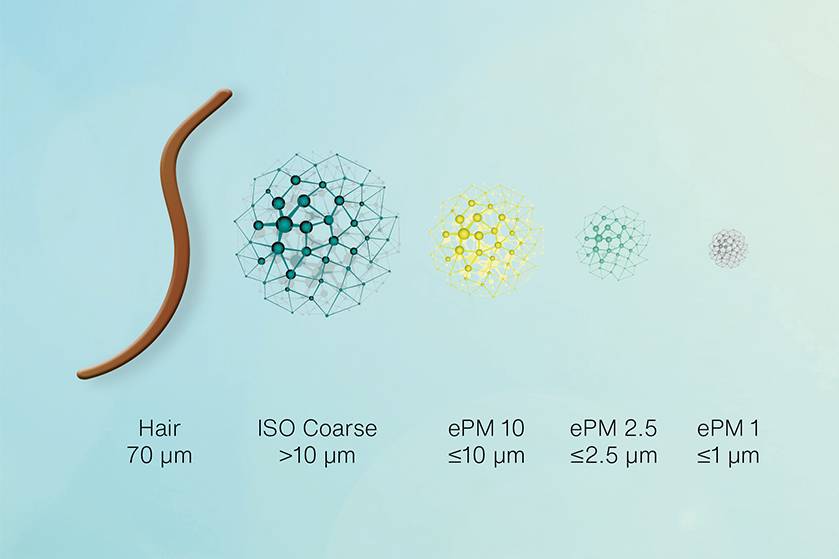Particulate matter – more commonly referred to as dust – is all around us. When dust is relatively coarse, we can see it in the air and on surfaces, but sometimes dust is so fine that we can’t see it at all. And the smaller the particles, the longer they stay in the air. But why is fine dust so dangerous, and what can you do to protect your company from its dangers?

Fine dust is split into two different sizes which (just like coarse dust) are measured in “PM". PM is just an abbreviation for “particulate matter”.
PM2.5
Probably the most common type of dust, PM2.5 refers to particles with a diameter of less than 0.0025 mm.
PM1 Fine dust
Consisting of ultra-fine particles with a diameter of less than 0.001 mm, this dust cannot be seen with the naked eye. PM1 dust is potentially even more damaging than PM2.5, as these particles are small enough to enter the bloodstream.
Respirable dust? What does that mean?
Both these types of dust fall under the umbrella of respirable dust, which is defined as particles small enough to get deep into the lungs when inhaled. They are so small that they are even deposited in the alveoli.
Particularly at home in industrial areas, PM1 particles are the pollutants most commonly found in large cities. Fossil fuels such as oil, diesel, gas, or coal are responsible for the release of these particles, because these are often used in power plants and combustion engines and thus end up in our environment and indoor spaces.
In 2017, scientists conducted a study using Chinese air measurement stations. There, it was determined how high the proportion of PM1 fine dust in the PM2.5 total mass is:
They found that PM1 fine dust accounted for almost 80 % of the total amount of fine dust. This is a concern because the study also found a connection between fine dust in the air we breathe and an increase in emergency health treatments – with most health problems being attributable to PM1.
"Particulate matter? No problem for our company! We'll just leave the windows and doors shut.” Of course, this would be an ideal solution. However, whether you open your windows and doors, or leave them closed, has little bearing on the fine dust content indoors.
Because fine dust can arise in different ways. For example, through the use of machines, systems, and vehicles such as forklifts. Here are some indoor sources:
Particulate matter poses a risk in many respects (e.g., for the environment or plant growth), but especially for human health. And the longer you or your employees breathe it in, the worse the effects.
If fine dust is inhaled regularly, it can lead to:
People who already suffer from asthma or COPD (chronic obstructive pulmonary disease) also tend to feel the negative effects of fine dust more easily.
Beyond the human impact and the associated health issues, PM1 can:
Fortunately, you can take steps to prevent it from getting out of hand – and into your employees’ lungs.
Zehnder Clean Air Solutions have been proven to dramatically reduce dust particles by up to 90 %, extracting them directly from the air before your workers have a chance to breathe them in.
With air purification systems that are individually adapted to your needs, you can protect the health of your employees and ensure up to 50 % less sick leave.
To complete your subscription to our newsletter, simply click on the link in your inbox. If you don't receive anything, check your spam folder to be sure.